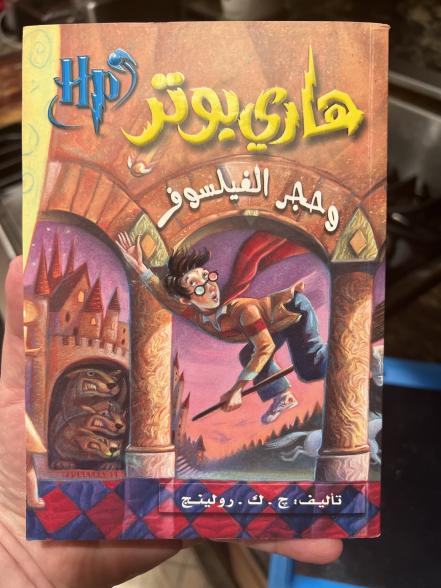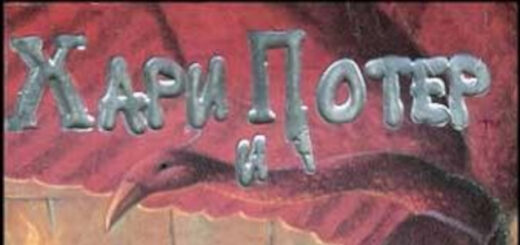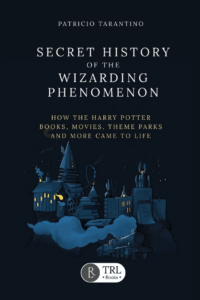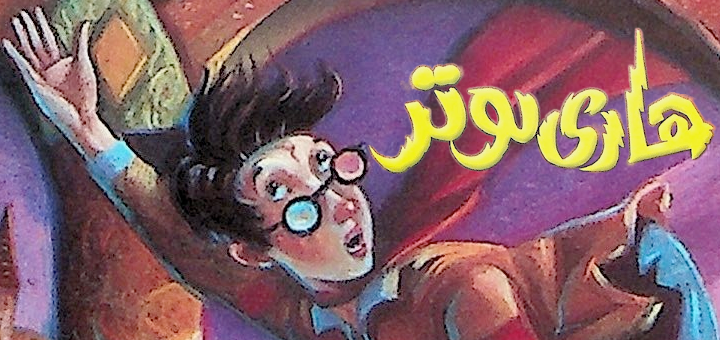 Harry Potter and the Morphing Arabic Translator
Harry Potter and the Morphing Arabic Translator
These days I’m scared to take a close look at any of the translations! It seems every time I do, there’s a mystery to solve. If my to-do list dropped to a reasonable level, I might go looking for things to investigate, but in the meantime I’m content to live in ignorance. But I can’t ignore something once it’s been observed—especially when it may upend some fundamental facts, like who the translator is!
If you haven’t read it yet, check out Baldur Babbling’s guest article Harry Potter and the Ever-Transfiguring Arabic about the Arabic macroeditions that were recently uncovered—what follows will make more sense.
The variation that @aroundtheworld_withharrypotter noticed first—the difference between Baldur’s “Standardizing” and “Source-orienting” macroeditions—was not huge (but significant enough for my collection criteria) and since the revision appeared to have happened in 2017, getting the newer edition I needed didn’t seem to be such a big deal. I popped it into my shopping cart and didn’t give it another thought. Until it arrived. I went through the new copyright page and was shocked to see it had a different translator: my 2008 edition listed Sabar Jabr Mahmūd as the translator and the new edition said it was translated by Rajāʾ ʿAbdullah and reviewed/edited by Sabar Jabr Mahmūd.
Sabar Jabr Mahmūd, who also translated Order of the Phoenix and Deathly Hallows, had always been the “translator of record” amongst our English sources as verified by a 2012 doctoral thesis by Wafa Dukmak. Rajāʾ ʿAbdullah, again according to Dukmak, was the translator of Chamber of Secrets, and edited Prisoner of Azkaban. So I contacted Baldur immediately—the variation was apparently because it was a new translation, not a revision!
Baldur was confused… not only because he was absolutely sure that these were the same translation, but because all of the editions1 he had collected examples of thus far—both the standardizing and the source-orienting samples—listed the translator as Rajāʾ ʿAbdullah (edited by Sahar Jabr Mahmūd). Like… what? Verifying that my 2008 edition was, in fact, the source-orienting text did not alleviate the confusion.
We still did not know what to make of the PDF scan that I had found long before. It was a radical departure from both of the texts Baldur had been examining, yet he was equally convinced it was still the same translation. There are enough stylistic cues to believe that it was an authentic authorized publication of Nahdet Misr’s; however, the scan doesn’t include the covers nor the copyright page. The next goal was to find a physical copy of the book the scan was taken from—and fortunately Baldur tracked down someone who had it—an early 2002 edition. He confirmed that the text was the same as the PDF and finally got a look at the copyright page: Rajāʾ ʿAbdullah (and no editor).
We still haven’t seen every edition so there are still gaps; but what should we make of this progression:
| Date | Edition | Macroedition | Translator | Editor |
|---|---|---|---|---|
| 2002-07 | ? | Original | RA | |
| 2008-01 | 4 | Source-Orienting | SJM | |
| 2008-05 | 5 | Source-Orienting | RA | SJM |
| 2011-01 | 7 | Source-Orienting | RA | SJM |
| 2018-01 | ? | Standardizing | RA | SJM |
| 2019-03 | ? | Standardizing | RA | SJM |
| 2020-03 | 2 (new ISBN)2 | Standardizing | RA | SJM |
Only a few weeks prior, I went on the record insisting that we should not second-guess what we’re told by the publisher about their own publications and so it’s ironic that that declaration was tested in such short order! The existence of the 2008 edition, implies that there must be two translations here. However, between Baldur’s analysis and the obvious inconsistencies, it’s clear that there are not—that there is only one translation.
Likely we’ll never know for sure, but I would speculate that what happened is this: Rajāʾ ʿAbdullah (RA) does the original translation which was quite liberally executed—Sahar Jabr Mahmūd (SJM) comes on to translate HBP (~2005), (perhaps had been a member of the “Translation and Publication Department” that translated Order of the Phoenix)—and Nahdet Misr decides to have SJM edit RA’s PS for consistency now that they’re so far into the series (<gulp> the obvious implication is that at least RA’s COS was likely also edited; perhaps also POA (which RA did not translate but apparently edited), GOF and OTP. Because SJM did the edit, I suspect that someone unwittingly put them on the copyright page as the translator producing at least one, but I suspect more likely two or three, editions of the book. Then someone noticed the mistake—possibly RA complained—and they corrected the mistaken attribution.
What’s funny is that that one mistake, despite it being included in a minority of the existing editions, has persisted so strongly—at least within the English-speaking fan community. It’s a great lesson, that it’s always worthwhile going back to original sources to verify facts!
Linguistically Interesting?
Being a linguist, my interest has been in the translations plus those variations that I think are “linguistically interesting”—the ones that I have finally labeled “macroeditions”. And to a large degree, other collectors have followed my lead. I would not presume to tell anyone what they do or do not need to have a “complete collection”—all I can do is share my opinion and rationale behind my personal choices as to what “counts” according to my criteria.
I think that the variation between all three of these macroeditions is linguistically interesting, largely for the reasons that Baldur laid out in his article: they exemplify different approaches to translation with different results. Although the differences between the source-orienting and standardizing macroeditions are not huge, the motivation for the changes is what make them interesting to me. They are not correcting typos or fixing oversights, they are making different choices—some of which may be based less on linguistic factors and more on legal, corporate, intellectual property factors. This latter is a force, that I think rarely encroaches on the creative side of translation and the fact that it demands a global coordination across so many languages is fascinating in and of itself.
Consequently, I, personally, count all three towards my collection completion criteria!
Original
| Title: | هاري بوتر وحجر الفيلسوف |
| Transliteration: | hāri bōter waḥajar al-filosōf |
| Translator: | |
| ISBN: | 978-977-14-1881-8 |
| Published: | 2002-07 |
| Publisher: |
Source-Orienting
| Title: | هاري بوتر وحجر الفيلسوف |
| Transliteration: | hāri bōter waḥajar al-filosōf |
| Translator: | |
| ISBN: | 978-977-14-1881-8 |
| Published: | 2007-06 |
| Publisher: |
Standardizing
| Title: | هاري بوتر وحجر الفيلسوف |
| Transliteration: | hāri bōter waḥajar al-filosōf |
| Translator: | |
| ISBN: | 978-977-14-1881-8 |
| Published: | 2017-08 |
| Publisher: |
Notes
1. The Arabic publisher, Nahdet Misr, doesn’t appear to distinguish between “print” and “edition”—another fact that has made investigating this issue difficult. Whether the book are identical or revised, each new run is called an “edition” in the books’ front matter.
2. Every Arabic edition/print before 2017 or 2018 was published under the same ISBN: 978-977-14-1881-8 / 977-141-881-5. Subsequently the ISBN is 978-877-14-5870-8 / 877-14-5870-8
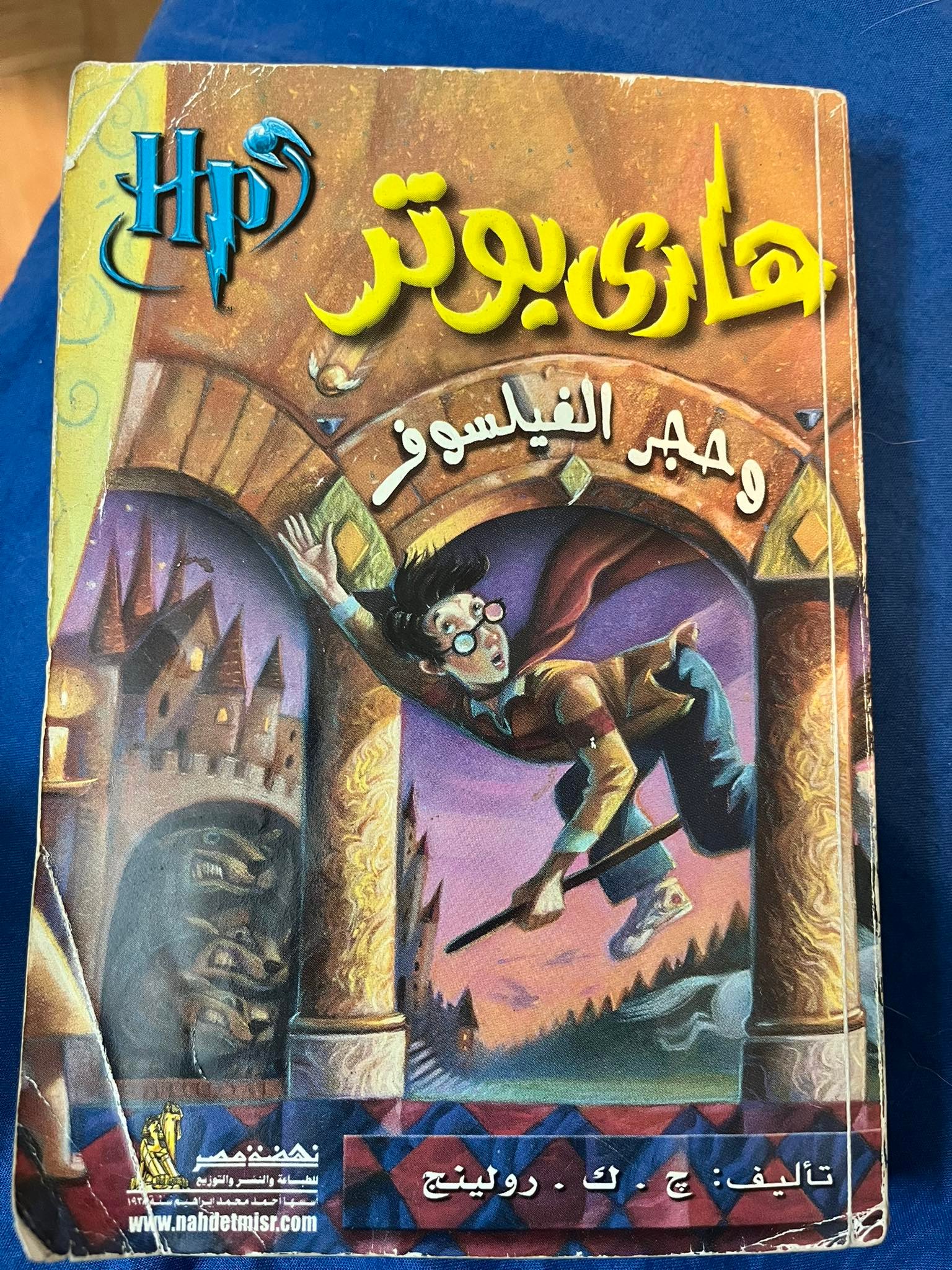
.jpg)
